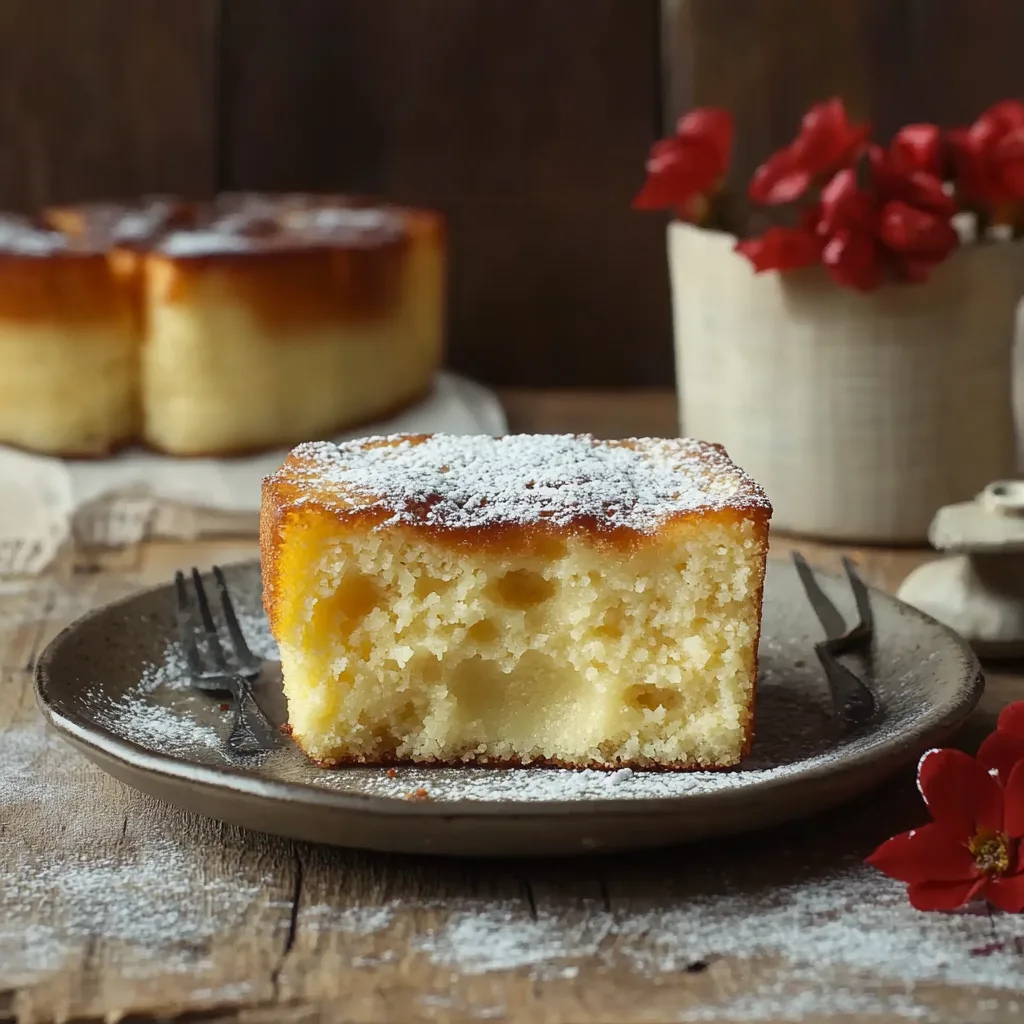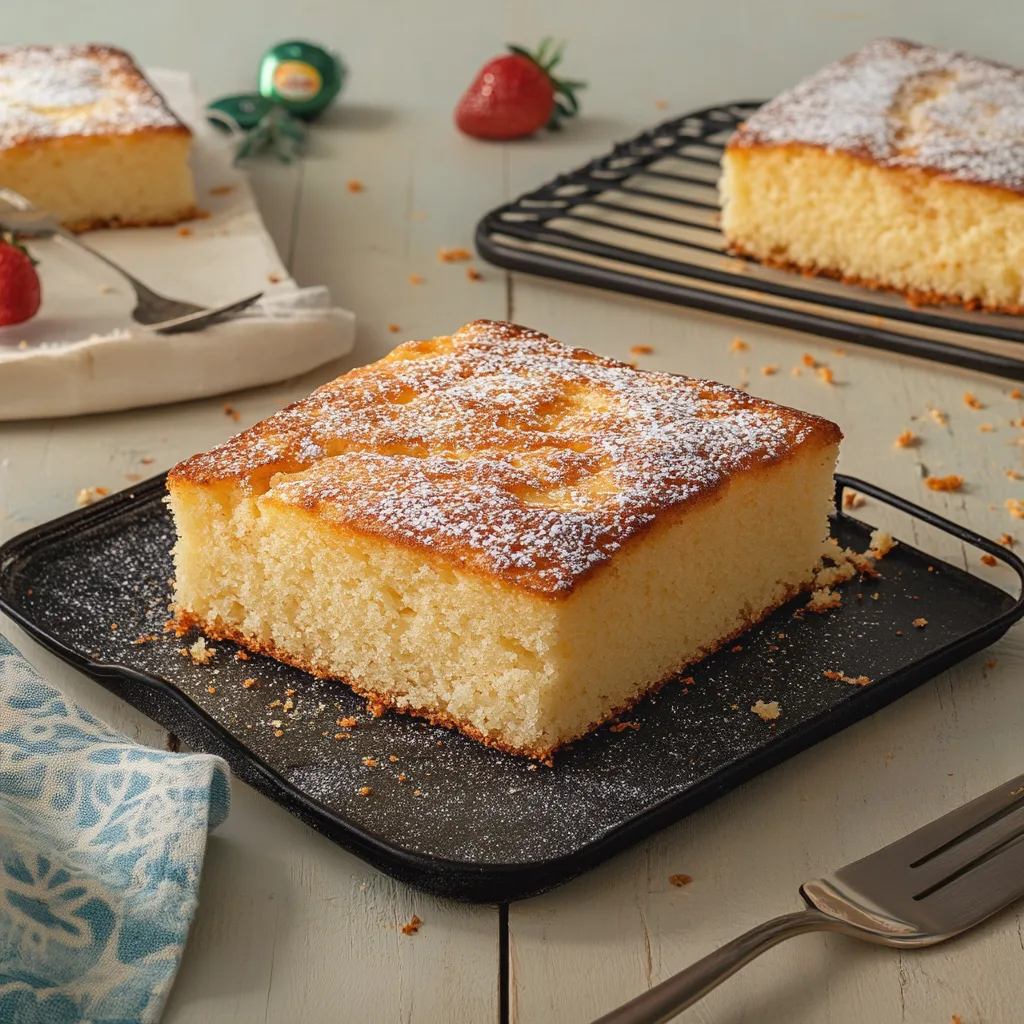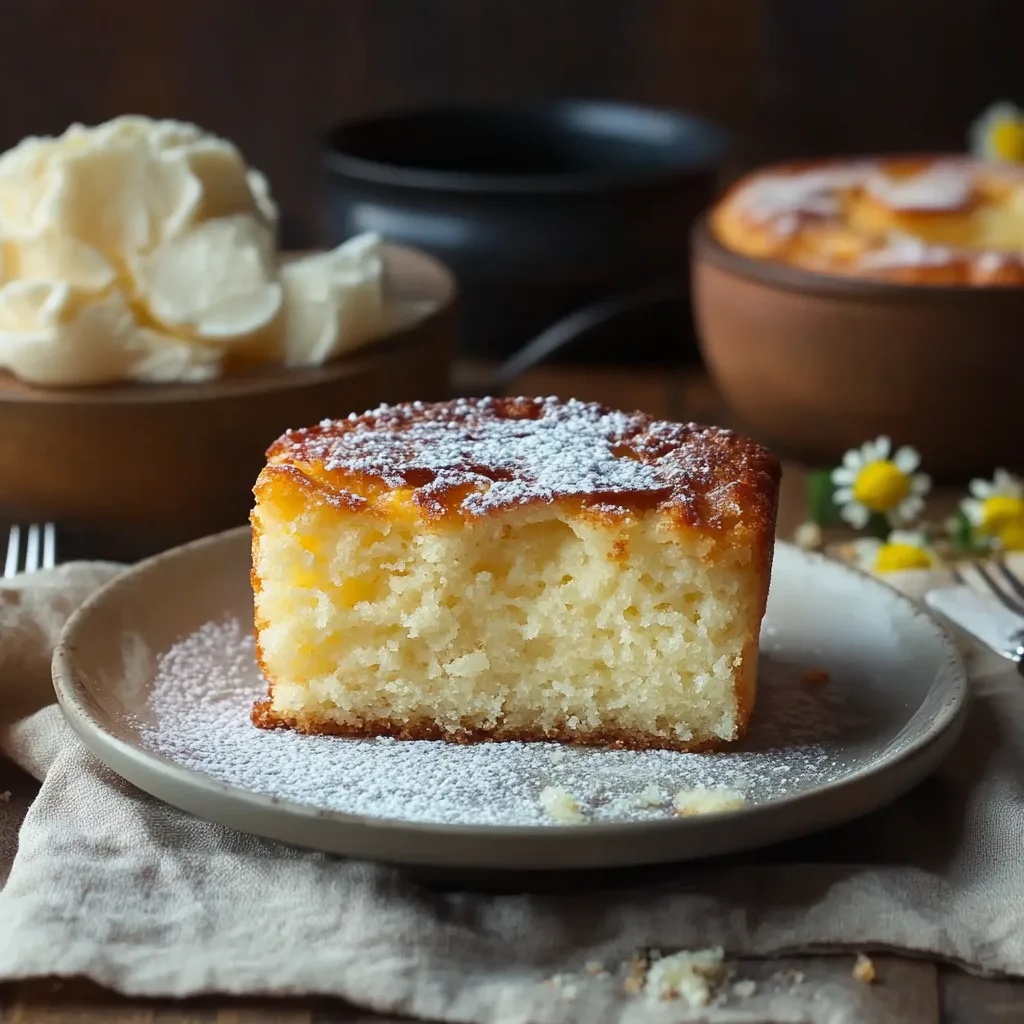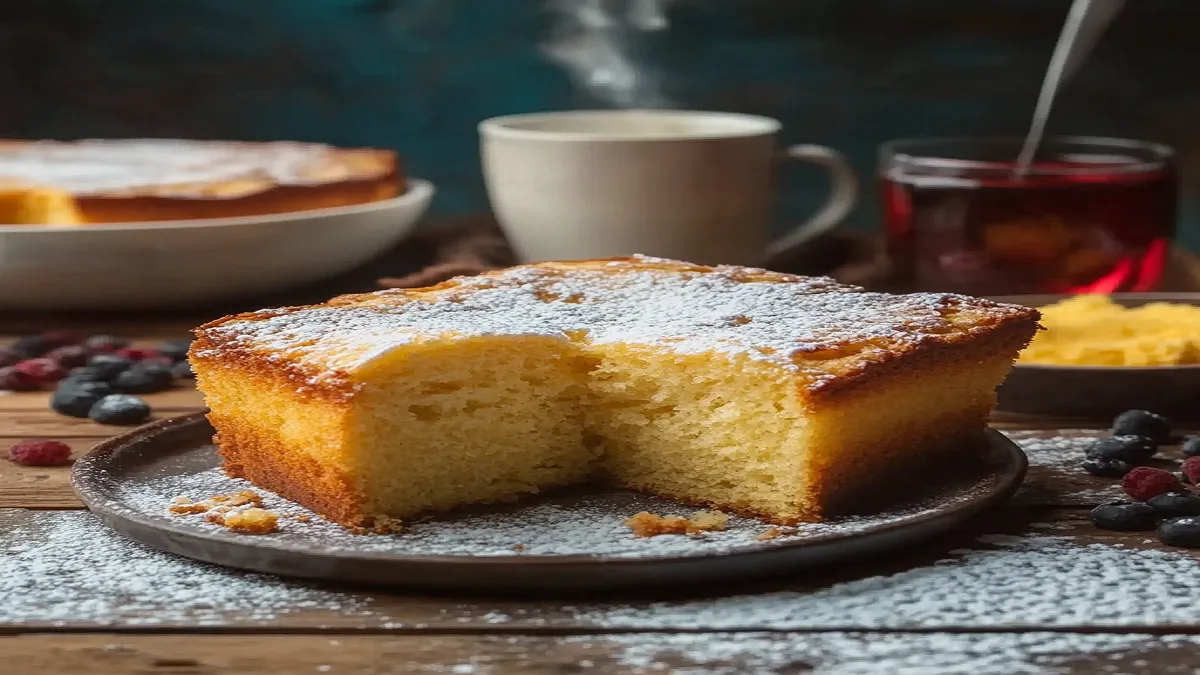If you’ve never thought of using kefir in a cake, get ready to be amazed. Imagine a cake that’s incredibly soft, light, and super moist—sounds too good to be true, right? Well, that’s exactly what a Kefir Sheet Cake brings to the table. This recipe takes the tangy, creamy goodness of kefir and transforms it into a cake that’s perfect for any occasion. Whether you’re hosting a family gathering or just craving something sweet, this cake is bound to impress. The best part? It’s not only easy to make, but it’s also packed with nutrients and probiotics, giving you a healthy dessert option without sacrificing flavor.
What is Kefir?
Before we jump into the cake recipe, let’s talk about kefir for a second. If you’ve never heard of it, kefir is a fermented dairy product that’s somewhat like yogurt, but with a thinner consistency. It’s made by fermenting milk with kefir grains, which are a combination of bacteria and yeast. This makes kefir a rich source of probiotics, which can promote gut health and aid digestion. Kefir has a unique tangy flavor, which makes it a perfect addition to cakes and other baked goods. Plus, the probiotics in kefir can make the cake just a little bit healthier—making it a dessert you can feel good about enjoying.
In fact, if you’re a fan of Strawberry Crunch Cake, you might find that kefir can help elevate the moisture and texture of cakes, similar to how it enhances this kefir sheet cake.

Why Use Kefir in Cake?
So, why kefir? Well, kefir has a natural acidity that adds a little tang to your baked goods, making them moist and tender. Its consistency is thinner than yogurt, so it’s perfect for creating a cake that’s fluffy without being too heavy. When combined with baking soda or baking powder, the acidity of kefir reacts to help your cake rise, giving it a light texture. Not to mention, kefir adds an extra layer of flavor that you won’t get from regular milk or buttermilk.
In this Kefir Sheet Cake, the kefir’s tang complements the sweetness of the cake, making it perfectly balanced. It’s a little bit different than the usual vanilla or chocolate sheet cakes, but in the best possible way.
Ingredients You’ll Need
Before we get started with the recipe, here’s what you’ll need to gather up:
For the cake:
- 2 ½ cups all-purpose flour
- 1 ½ teaspoons baking powder
- ½ teaspoon baking soda
- ½ teaspoon salt
- 2 large eggs
- 1 ¼ cups granulated sugar
- 1 cup kefir (plain or vanilla works great)
- ½ cup unsalted butter, melted
- 2 teaspoons vanilla extract
- ½ cup vegetable oil
For the frosting:
- 1 cup heavy cream
- ½ cup powdered sugar
- 1 teaspoon vanilla extract
- A pinch of salt
- 2 tablespoons softened butter
How to Make Kefir Sheet Cake
Now that you’ve gathered everything, let’s dive into the step-by-step instructions for making this indulgent Kefir Sheet Cake.
Step 1: Preheat Your Oven
Start by preheating your oven to 350°F (175°C). Grease a 9×13-inch baking pan or line it with parchment paper. This ensures that your cake won’t stick, and it’ll come out nice and easy after baking.
Step 2: Mix Dry Ingredients
In a large mixing bowl, whisk together the flour, baking powder, baking soda, and salt. These dry ingredients are the foundation for the cake, so make sure they’re evenly mixed.
Step 3: Beat the Wet Ingredients
In a separate bowl, beat the eggs and sugar together until they’re smooth and creamy. Add the kefir, melted butter, vegetable oil, and vanilla extract, mixing until everything is well combined. The mixture should be slightly thick and smooth.
Step 4: Combine the Wet and Dry Ingredients
Gradually add the dry ingredients to the wet mixture, mixing gently until it’s all just combined. Be careful not to overmix; you want to keep the batter light and airy.
Step 5: Bake the Cake
Pour the batter into your prepared baking pan, spreading it evenly with a spatula. Place the pan in the preheated oven and bake for 30-35 minutes, or until a toothpick inserted in the center comes out clean. Keep an eye on the cake, as ovens vary in temperature. The top should be golden and slightly firm to the touch.
Step 6: Let it Cool
Once the cake is done, remove it from the oven and let it cool in the pan for 10 minutes. After that, transfer it to a wire rack to cool completely. This step is crucial—if you frost the cake while it’s still warm, the frosting might melt off.
Step 7: Prepare the Frosting
While the cake is cooling, whip up the frosting. In a mixing bowl, combine heavy cream, powdered sugar, vanilla extract, and a pinch of salt. Using a hand mixer or stand mixer, beat the ingredients together until stiff peaks form. Add in the softened butter, and beat again until the frosting is smooth and fluffy.
Step 8: Frost the Cake
Once your cake has completely cooled, spread the frosting evenly over the top. You can use a spatula to make it smooth, or if you’re feeling fancy, pipe the frosting into decorative swirls.
Step 9: Serve & Enjoy!
Cut the cake into squares and serve. This kefir sheet cake is perfect for any occasion, from casual family dinners to special celebrations. It’s the kind of dessert that’s so simple to make but always feels like a treat.

Why This Kefir Sheet Cake is a Game-Changer
Let’s be honest—everyone loves a good sheet cake. It’s easy to make, feeds a crowd, and tastes amazing. But this Kefir Sheet Cake goes above and beyond. Not only is it light and fluffy, but it also has a unique flavor profile thanks to the kefir. The tanginess of the kefir pairs beautifully with the sweetness of the cake, making it far from your average dessert.
The addition of kefir also makes the cake a little healthier than typical cake recipes. Since kefir is packed with probiotics, you’re getting some gut-friendly benefits with every bite. Plus, the cake is rich in calcium, vitamin B12, and protein—talk about a nutritious treat!
If you’re interested in more cake ideas, be sure to check out Banana Bread Cookies for a different twist on a classic dessert.
Key Takeaways
| Feature | Details |
|---|---|
| Cake Type | Light, fluffy, and moist kefir sheet cake |
| Flavor | Balanced with a slight tang and sweetness |
| Health Benefits | Probiotics from kefir for gut health, plus vitamins and protein |
| Ease of Preparation | Quick and easy, perfect for any occasion |
| Frosting | Whipped cream frosting for a light, sweet finish |
Nutritional Facts (Per Serving)
- Calories: 240
- Protein: 3g
- Total Fat: 15g
- Saturated Fat: 8g
- Cholesterol: 40mg
- Carbohydrates: 25g
- Fiber: 1g
- Sugar: 18g
- Vitamin A: 10% DV
- Calcium: 6% DV
- Iron: 2% DV

Conclusion
If you’re in the mood for something a little different but still crave that classic, comforting cake, Kefir Sheet Cake is the answer. It’s not only delicious but also offers some unexpected health benefits. The kefir gives the cake an extra boost of probiotics, while the light and moist texture make every bite a treat. Whether you’re feeding a crowd or enjoying a slice by yourself, this cake is sure to become a new favorite in your dessert repertoire. Give it a try—you’ll be pleasantly surprised at how amazing kefir can make your cake!
FAQs
What does kefir do in baking?
Kefir is a fantastic ingredient to use in baking due to its ability to provide both moisture and a subtle tangy flavor. The probiotics in kefir help to break down the gluten in flour, resulting in a softer and more tender texture in baked goods. Additionally, kefir’s acidity reacts with baking soda or baking powder to create a light, airy rise, much like buttermilk or yogurt would. This makes kefir ideal for cakes, muffins, and pancakes, providing both flavor and a lighter texture. The tangy taste of kefir also enhances the flavor profile of sweet treats without overpowering them.
Can I use kefir instead of yogurt in cake?
Yes, kefir can be used instead of yogurt in cake recipes. Both kefir and yogurt are dairy products that contain similar levels of acidity and moisture. However, kefir has a thinner consistency than yogurt, which makes it more liquid. If you’re substituting kefir for yogurt in a cake, you may need to adjust the flour content to compensate for the additional liquid. In terms of flavor, kefir has a milder tang than most yogurts, which could result in a slightly different taste in your cake, but it will still provide a delicious, moist crumb.
Can I use kefir instead of buttermilk in cake?
Yes, kefir is an excellent substitute for buttermilk in cake recipes. Both kefir and buttermilk are acidic, which helps activate baking soda or baking powder, resulting in a light and fluffy texture. The substitution works best in recipes where the acidity of buttermilk is needed to balance the sweetness or help with rising. Since kefir is often thinner than buttermilk, you may need to adjust the liquid-to-dry ingredient ratio slightly, but in general, a 1:1 substitution will work well.

